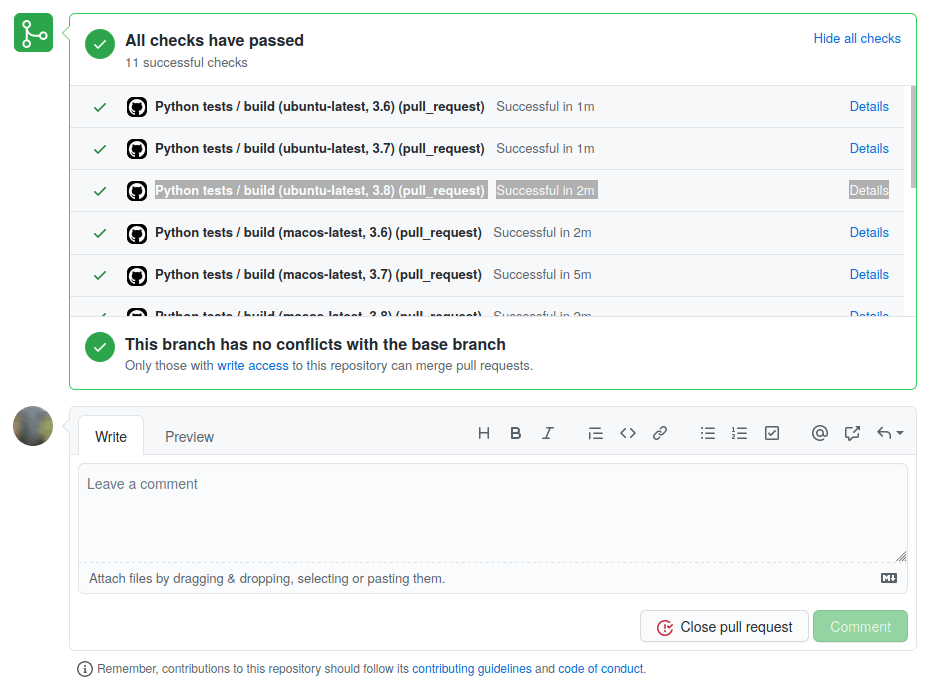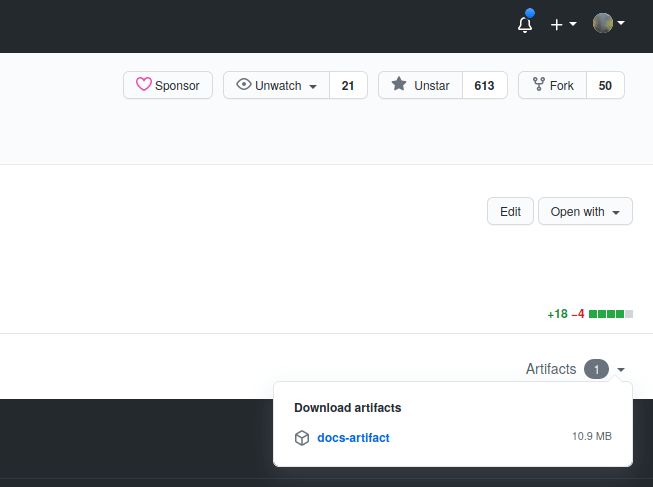Contribute to Pingouin#
There are many ways to contribute to Pingouin: reporting bugs or results that are inconsistent with other statistical softwares, adding new functions, improving the documentation, etc…
If you like Pingouin, you can also consider buying the developers a coffee!
Code guidelines#
Before starting new code, we highly recommend opening an issue on GitHub to discuss potential changes.
Please use standard pep8 and flake8 Python style guidelines. Pingouin uses black for code formatting. Before submitting a PR, please make sure to run the following command in the root folder of Pingouin:
$ black . --line-length=100
Use NumPy style for docstrings. Follow existing examples for simplest guidance.
New functionality must be validated against at least one other statistical software including R, SPSS, Matlab or JASP.
When adding new functions, make sure that they are generalizable to various situations, including missing data, unbalanced groups, etc.
Changes must be accompanied by updated documentation and examples.
After making changes, ensure all tests pass. This can be done by running:
$ pytest --doctest-modules
Checking and building documentation#
Pingouin’s documentation (including docstring in code) uses ReStructuredText format, see Sphinx documentation to learn more about editing them. The code follows the NumPy docstring standard.
All changes to the codebase must be properly documented. To ensure that documentation is rendered correctly, the best bet is to follow the existing examples for function docstrings.
Build locally#
If you want to test the documentation locally, you will need to install additional dependencies. They can be installed with the docs extra:
$ pip install --upgrade pingouin[docs]
and then within the pingouin/docs directory do:
$ make html
or call make from the root pingouin directory directly,
using the -C flag to tell the make command to first switch to the docs directory,
and then come back after executing the html recipe.
$ make -C docs html
Inspect on GitHub#
Thanks to the GitHub Actions continuous integration service, the documentation is also built on GitHub servers after every commit you make as part of a Pull Request. To inspect these build artifacts, follow these steps:
Click on the “Show all checks” dropdown menu at the end of the Pull Request user interface

Screenshot of the GitHub checks dropdown menu#
Click on the check that starts with
Python tests / build (ubuntu-latest, 3.9)Now in the top right corner of the opening window, you will see a small dropdown menu called “Artifacts”

Screenshot of the GitHub build artifacts dropdown menu#
Click on that drowndown menu and download the
docs-artifactzip file
You can then unpack that zip file on your computer, enter the directory, and open the index.html file that you will find there.
That should open the Pingouin documentation based on the changes from your Pull Request.